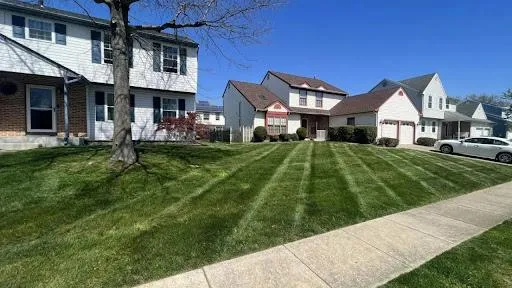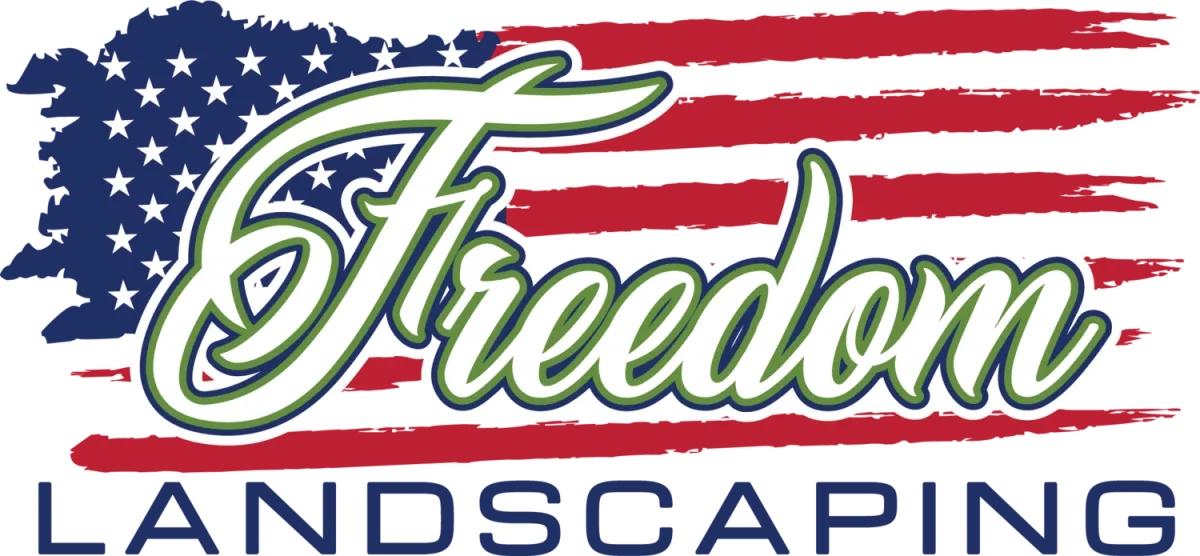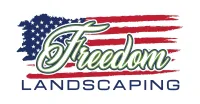BLOGS

Landscaping That Adds Value and the Best Design Structure
Landscaping in Sicklerville, NJ, that adds value includes projects like tree planting, creating outdoor living spaces, installing efficient irrigation systems, and using sustainable practices. These improvements can significantly boost your property’s appeal and increase its resale value by 15-20%. By focusing on design principles like unity, balance, and functionality, you can create a landscape that not only looks great but also enhances your home’s overall value.
Landscaping is more than just planting flowers or trimming grass—it's a powerful way to boost property value and create a welcoming outdoor space. At Freedom Landscaping, we specialize in transforming outdoor spaces to enhance your home’s beauty and value. Proudly serving Sicklerville, NJ, and surrounding areas, our expert landscapers are ready to bring your vision to life.
Key Takeaways
Landscaping can increase property value by up to 20%.
Key projects like tree planting, outdoor living spaces, and irrigation systems add the most value.
Sustainable landscaping practices reduce long-term costs and appeal to eco-conscious buyers.
Thoughtful design principles ensure your landscape is both beautiful and functional.
Partnering with experienced landscapers in Sicklerville, NJ, ensures the best return on your landscaping investment.
Landscaping That Adds the Most Value
Investing in strategic landscaping projects can significantly boost your home’s resale value. Whether you’re preparing to sell or simply want to enhance your outdoor living space, certain landscaping features stand out for their ability to increase property value.
Tree Planting
Mature trees not only improve aesthetics but provide practical benefits like shade, privacy, and energy savings. Their environmental advantages, including improving air quality and promoting biodiversity, make them a valuable addition to any landscape.Reduces energy costs by providing natural cooling.
Increases property curb appeal with beautiful, mature trees.
Adds environmental value by improving air quality.
Outdoor Living Spaces
Creating functional outdoor spaces, such as patios, decks, and outdoor kitchens, is one of the most sought-after features for modern homeowners. These areas extend your living space and provide opportunities for relaxation and entertainment.Expands usable living space.
Increases property appeal by offering areas for dining and leisure.
Adds versatility to your home, enhancing both functionality and enjoyment.
Irrigation Systems
An efficient irrigation system ensures your landscape remains lush and green with minimal maintenance. Automated systems make it easier to care for your plants while conserving water and preventing common issues like erosion.Reduces water waste and promotes eco-friendly landscaping.
Ensures healthy, thriving plants and grass throughout the year.
Attracts potential buyers by offering low-maintenance landscaping.
Sustainable Landscaping
Sustainability is essential for modern landscaping. Eco-friendly practices like using native plants and water-efficient designs can reduce long-term costs and attract eco-conscious buyers looking for low-maintenance properties.Lowers water bills through drought-resistant plants and xeriscaping.
Appeals to environmentally conscious buyers.
Reduces maintenance needs, making the landscape more affordable over time.
Curb Appeal Enhancements
First impressions matter, and a visually appealing exterior can make a big difference in attracting potential buyers. Simple updates like fresh paint, new lighting, and well-maintained walkways can improve curb appeal and increase property value.Enhances the visual appeal of your home’s entrance.
Adds immediate value through strategic updates like lighting and paint.
Creates a welcoming atmosphere that draws in prospective buyers.
Design Principles for Effective Landscaping
When designing your landscape, it’s important to focus on key principles that ensure the space is both visually appealing and functional. By considering these principles, you can create a landscape that enhances the beauty and value of your home.
Unity
Unity refers to the harmony and cohesion of the design elements in your landscape. A cohesive design ensures that all elements, from plants to hardscaping, work together seamlessly. Achieving unity helps create a visually appealing and well-organized outdoor space.Use repetition of shapes, colors, and materials to tie elements together.
Ensures the landscape feels cohesive and not disjointed.
Creates a balanced, harmonious aesthetic throughout the space.
Balance
Balance involves distributing visual weight evenly across the landscape. Whether through symmetrical or asymmetrical designs, balance helps maintain a sense of stability and avoids creating a space that feels too heavy in one area.Large elements like trees should be balanced by smaller features such as flowers.
Ensures the landscape doesn’t feel overwhelming or lopsided.
Adds stability and visual appeal through even distribution of design elements.
Scale and Proportion
Scale and proportion are essential to ensure that the plants and features in your landscape fit appropriately with the available space. A good balance between the size of the elements ensures visual harmony and avoids overwhelming or underwhelming the area.Large trees or bushes should complement, not overwhelm, smaller areas.
Ensure plants and features are proportionate to the space.
Helps create a well-balanced and visually pleasing environment.
Functionality
A great landscape should serve a functional purpose while remaining beautiful. Design spaces that facilitate easy movement, relaxation, or outdoor gatherings. Functionality ensures the landscape works well for everyday use while still looking visually appealing.Include shaded seating areas for comfort.
Create walkways and paths for easy navigation.
Ensure open areas for play, gatherings, or entertainment.
How to Choose the Best Landscaping Plants for Your Home
Selecting the right plants is essential for a successful landscape design. Choose plants that thrive in your climate, soil, and meet your aesthetic needs. Native plants are ideal for sustainability and easy maintenance.
Climate Suitability
Choose plants that are suited to your local climate and weather patterns.
Native plants typically require less maintenance and water.
They adapt well to local soil conditions and environmental factors.
Blooming Seasons
Select a variety of plants that bloom at different times of the year.
Ensure continuous visual interest throughout the seasons.
Mix perennials and annuals to achieve year-round beauty.
Height and Spread
Pay attention to the plant’s mature height and spread.
Proper spacing ensures plants won’t overcrowd each other.
Helps maintain balance and proportion in your landscape.
Aesthetic Preferences
Choose plants that complement the colors and textures in your landscape design.
Incorporate different foliage, flowers, and plant shapes for visual variety.
Match plants with your home’s style for a cohesive look.
The Importance of Lawn Care in Landscaping
A healthy lawn is the foundation of a beautiful landscape. Consistent lawn care is essential to maintain green, lush grass, enhance curb appeal, and provide a strong base for other landscaping features.
Regular Mowing
Mow your lawn regularly to keep it neat and promote healthy growth.
Vary the mowing height to encourage root development.
Helps maintain a uniform, well-groomed appearance.
Fertilization
Fertilize your lawn to provide essential nutrients.
Use a balanced fertilizer tailored to your grass type.
Boosts color, density, and overall health.
Watering
Water your lawn deeply and consistently.
Early morning watering prevents disease and ensures proper absorption.
Adjust watering schedules during seasonal changes.
Aeration and Dethatching
Aerate the soil annually to prevent compaction and improve root health.
Dethatch your lawn to remove dead grass and encourage new growth.
Helps maintain a strong, thriving lawn.
Sustainable Landscaping Practices for a Greener Future
Sustainable landscaping reduces water usage, minimizes maintenance, and improves your property’s resilience. It’s an eco-friendly way to enhance your landscape while cutting down on long-term costs.
Water-Efficient Systems
Install drip irrigation systems to conserve water and target plant roots directly.
Use rain barrels to collect and reuse water.
Choose drought-resistant plants to reduce water consumption.
Native Plants
Incorporate native plants that require less water and maintenance.
Native plants support local wildlife and promote biodiversity.
They thrive in your climate, reducing the need for fertilizers and pesticides.
Low-Maintenance Features
Use mulch, rocks, or groundcovers to reduce soil erosion and conserve moisture.
Minimize lawn areas and replace them with low-maintenance plants or hardscaping.
Reduces the need for constant care and helps the environment.
Energy-Efficient Landscaping
Plant trees strategically to provide shade and reduce cooling costs.
Use evergreen trees as windbreaks to reduce heating expenses in winter.
Helps make your home more energy-efficient and eco-friendly.
Frequently Asked Questions About Landscaping
What services do most landscaping companies offer?
Most landscaping companies offer services such as landscape design, lawn care, tree planting, hardscaping (patios, walkways), irrigation installation, and seasonal cleanups.
What is an example of landscaping?
An example of landscaping is designing and installing a garden with flowers, shrubs, trees, and a pathway to enhance the appearance and functionality of an outdoor space.
What is landscape maintenance?
Landscape maintenance involves ongoing tasks like mowing, trimming, fertilizing, watering, and cleaning to keep a landscape healthy, neat, and visually appealing.
Contact Us for Expert Landscaping Services in Sicklerville, NJ
Ready to transform your outdoor space? At Freedom Landscaping, we specialize in enhancing your property’s value with expert landscaping services. Serving Sicklerville, NJ, and nearby areas, contact us today for a consultation and bring your vision to life!
Ready To Give Your Property The Love It Deserves?
Whether it is keeping your lawn professionally maintained or completely re-vamping the look of your landscape, let our team of professional landscapers at Freedom Landscaping take your property to a whole new level!
Contact Us
Mon - Sat: 7:00 am - 6:00 pm
Sunday: Closed
© 2025 Freedom Landscaping LLC. All Rights Reserved. Privacy Policy. Terms & Conditions. Web Design By Fused Media.


